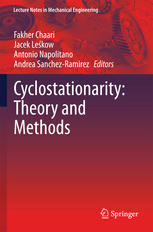

Most ebook files are in PDF format, so you can easily read them using various software such as Foxit Reader or directly on the Google Chrome browser.
Some ebook files are released by publishers in other formats such as .awz, .mobi, .epub, .fb2, etc. You may need to install specific software to read these formats on mobile/PC, such as Calibre.
Please read the tutorial at this link: https://ebookbell.com/faq
We offer FREE conversion to the popular formats you request; however, this may take some time. Therefore, right after payment, please email us, and we will try to provide the service as quickly as possible.
For some exceptional file formats or broken links (if any), please refrain from opening any disputes. Instead, email us first, and we will try to assist within a maximum of 6 hours.
EbookBell Team

0.0
0 reviewsIn the last decade the research in signal analysis was dominated by models that encompass nonstationarity as an important feature. This book presents the results of a workshop held in Grodek—Poland in February 2013 which was dedicated to the investigation of cyclostationary signals. Its main objective is to highlight the strong interactions between theory and applications of cyclostationary signals with the use of modern statistical tools.
An important application of cyclostationary signals is the analysis of mechanical signals generated by a vibrating mechanism. Cyclostationary models are very important to perform basic operations on signals in both time and frequency domains. One of the fundamental problems in diagnosis of rotating machine is the identification of significant modulating frequencies that contribute to the cyclostationary nature of the signals. The book shows that there are modern tools available for analyzing cyclostationary signals without the assumption of gaussianity. Those methods are based on the ideas of bootstrap, subsampling and Fraction-of-time (FOT) models. The book is organised in two parts. The first part will be dedicated to pure theory on cyclostationarity. Applications are presented in the second part including several mechanical systems such as bearings, gears, with or without damages.